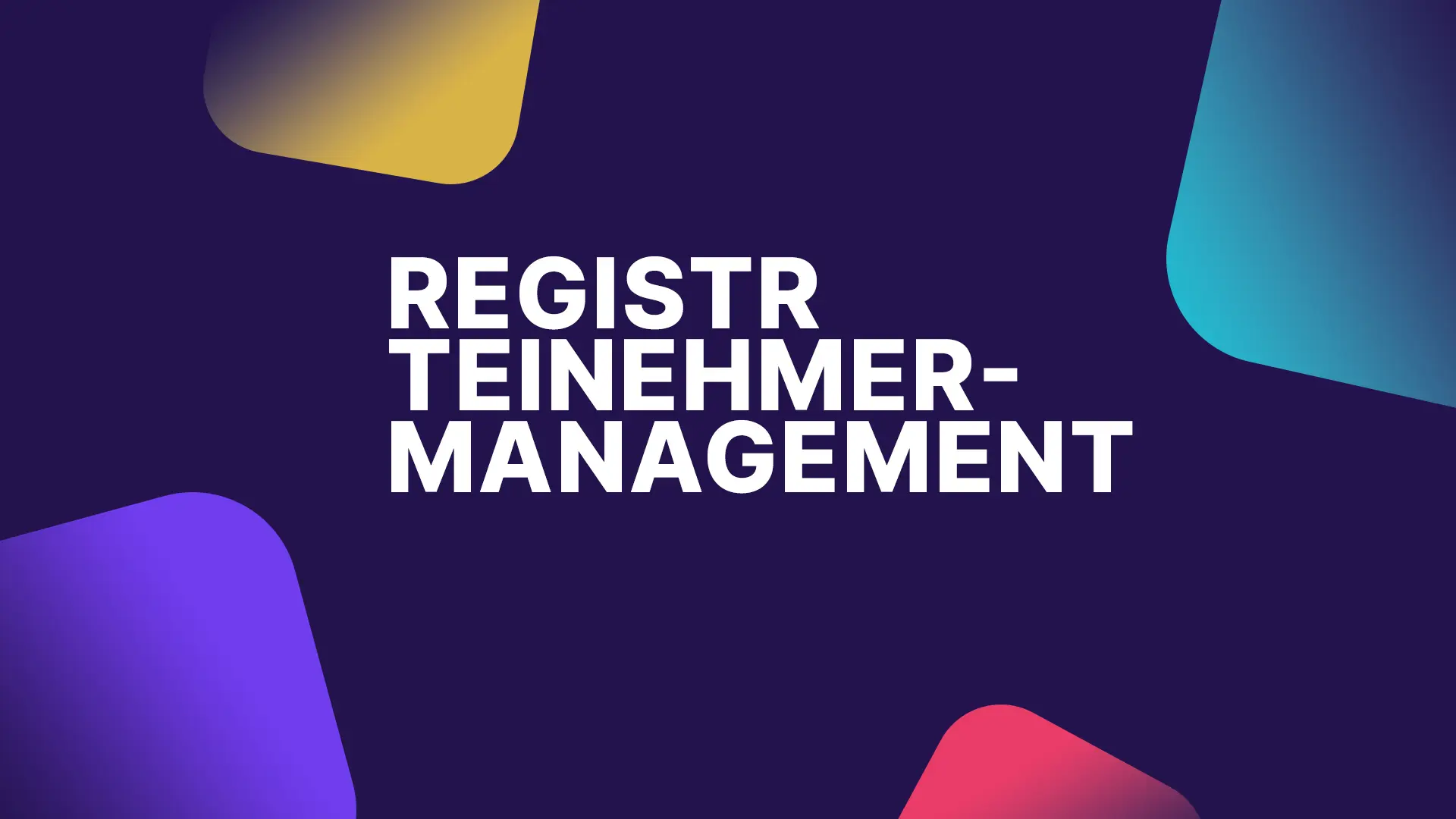Many rooms, satisfied guests, smooth processes: behind every successful event is strong participant management. When registrations stall, emails get lost, and check-in slows down, your brand’s image suffers. Efficient participant management brings order to every detail: from targeted invitations and personalized communication to quick access on site and in-depth evaluation afterwards. This reduces effort, avoids sources of error, and creates a compelling experience for your guests. In this article, you will learn what constitutes good participant management, what typical stumbling blocks you should avoid, and how digital tools can streamline your processes. The goal is clear: less administration, more quality, and a measurable contribution to the success of your event.
What is participant management?
Participant management refers to all organizational and communication processes associated with managing event participants. This includes invitations, registration, check-in, information exchange during the event, and follow-up after the event. The goal is to make each phase of the participant journey as efficient, personal, and error-free as possible.
Professional participant management often begins long before the actual event. It ensures that invitations are sent to the right target group, registrations run smoothly, and participant data is managed centrally. During the event, it enables quick check-in and ensures that guests receive personalized information and professional service. After the event, it provides valuable data for evaluating satisfaction, engagement, and response rates.
This clearly distinguishes participant management from pure event logistics. While the latter concerns setup, technology, or catering, participant management focuses on the people at the center of the event. Combined with modern digital tools, it becomes a strategic success factor that takes overall event planning to a new level.
Why good participant management is crucial
An event stands or falls on the satisfaction of its participants. Good participant management ensures that your guests feel welcome, are well informed, and enjoy a smooth experience. It combines organizational efficiency with emotional impact and creates the basis for successful events of any size.
Clear structures and automated processes save time and prevent errors. Whether sending invitations, processing payments, or printing name tags, a well-organized system reduces manual steps and provides a transparent overview of all registrations.
Today’s participants expect to be addressed individually. With modern participant management systems, you can send targeted messages, automate reminders, and provide personalized information. This makes guests feel taken seriously and valued.
Fast check-in, clear information, and digital access controls leave a positive impression. With a professional system, long waiting times and missing participant lists are a thing of the past.
After the event, participant management provides valuable insights. Feedback, no-show rates, and interaction rates help to better plan future events and improve communication in a targeted manner.
Participants who enjoy a structured and pleasant event are happy to return and recommend it to others. Good participant management therefore contributes directly to brand loyalty and long-term success.

10 tips for efficient event planning
Efficient event planning: Discover 10 practical tips for successful events – from budget planning and digital tools to participant management.

registr – Participant registration & management
Participant registration for events made easy: ✅ GDPR-compliant, ✅ corporate look, ✅ mobile-friendly. Request a demo now!
Common obstacles in participant management
Even well-planned events can falter if participant management doesn’t work. Often, it’s not major oversights but minor organizational weaknesses that add up and disrupt the process. If you know what these stumbling blocks are, you can avoid them and offer your guests a thoroughly professional experience.
-
Lack of overview of registrations and participant data
Wenn Informationen über verschiedene Tabellen, Tools oder E-Mail-Postfächer verteilt sind, wird das Erfassen von Anmeldungen schnell unübersichtlich. So gehen Daten verloren oder doppelt ein, was unnötigen Aufwand verursacht. Eine zentrale Datenbasis ist hier entscheidend, um jederzeit den Überblick zu behalten.
-
No well-thought-out registration process
Overly complicated registration forms or unclear steps in the registration process cause potential participants to abandon the process. An intuitive, mobile-friendly registration form with automatic confirmation reduces bounce rates and improves the user experience.
-
Insufficient communication before the event
Many event teams underestimate the importance of information flow. Participants should know where they need to go, when they should arrive, and what to expect. Missing reminders or unclear information can quickly lead to confusion. Automated emails or SMS notifications can help remedy this situation.
-
No preparation for short-term changes
Participant numbers, room layouts, and technical plans can change at short notice. Manually managing such adjustments risks chaos on site. Digital systems make it possible to communicate changes in real time and adapt processes flexibly.
-
Lack of follow-up and data analysis
After the event is before the event. However, feedback, no-shows, and satisfaction ratings are often not collected or evaluated. Yet this information provides valuable insights for making future events more targeted and successful.
Digital tools and automation in participant management
Digital solutions simplify the entire organization of an event. They help you structure processes, share information in a targeted manner, and create a professional participant experience on the day of the event. The following areas show where digital support is particularly valuable.
Preparation and central organization
During the planning phase, it is important to maintain a clear overview of participant data, schedules, and internal responsibilities. Digital systems create order and make processes traceable.
Typical functions in this phase:
- Clear management of participant lists
- Customizable workflows for internal teams
- Planning program items and session structures
Registration and communication
Clear, transparent registration conveys professionalism and builds trust. Digital solutions ensure that information reaches your participants without delay.
Typical functions in this phase:
- Online Formulare mit klarer Nutzerführung
- Automatic confirmation and reminders
- Personalized messages before the event
Implementation and participant experience on site
The day of the event itself determines how your event will be perceived. Digital applications support a quick start and create opportunities for interaction.
Typische Funktionen während des Events
- Quick check-in via app or code
- Digital program overview in real time
- Interactive elements such as matchmaking or social feeds
Follow-up and evaluation
After the event, the analysis begins. The aim here is to gather insights and use them to plan future events.
Typical functions in this phase:
- Structured feedback surveys
- Evaluation of participation rates and interest profiles
- Passing on relevant information to marketing or sales
Conclusion
Professional participant management is the foundation for successful events. It ensures that information flows clearly, processes remain transparent, and your guests feel well looked after from the invitation to the response. When processes are structured and digital solutions are used sensibly, you gain certainty in planning, reduce manual effort, and improve the overall experience for your participants.
With a well-thought-out mix of organization, communication, interaction, and evaluation, you can create an event that not only runs smoothly but also leaves a lasting impression. This way, participant management becomes not just an organizational duty but a real mark of quality for your event.


